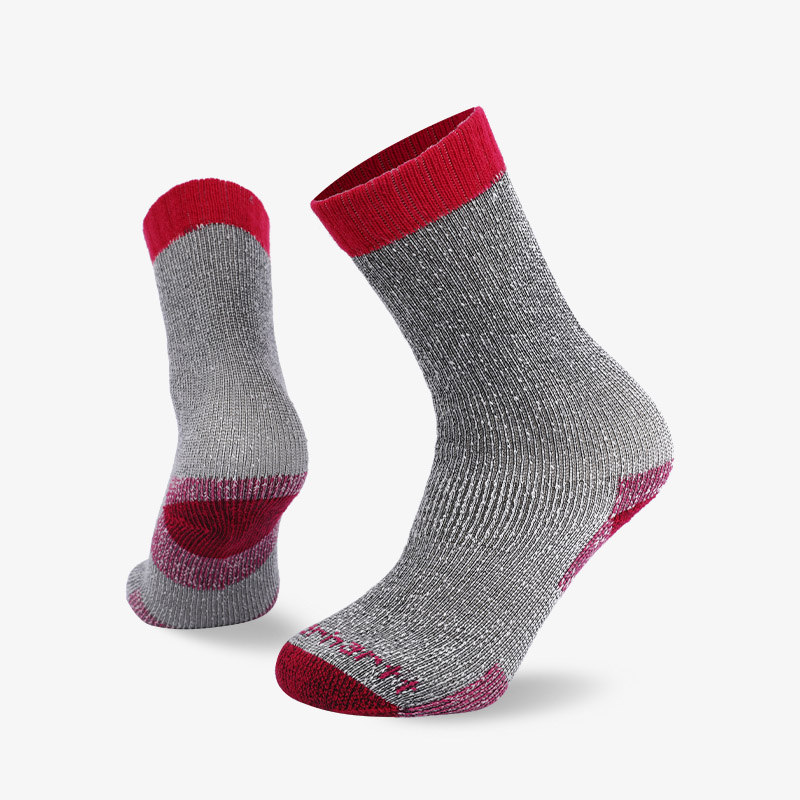

Hiking socks are thicker on the forefoot and heel of th […]
Hiking socks are thicker on the forefoot and heel of the foot, which can play a certain buffering effect; the arch and ankle are more elastic to ensure that the socks fit and will not slip or wrinkle due to friction. The fabric has strong moisture permeability and can quickly wick away sweat and keep your feet dry.
1.MATERIAL
The fabric of hiking socks is generally composed of many different materials, such as:
Merino Wool
The gentle and dense Merino wool not only has the function of natural temperature regulation, sweat absorption, breathability, and moisture removal, but also has a natural antibacterial and deodorant effect. Although it is more expensive, it is the most popular hiking socks material
COOLMAX fabric
The difference between INVISTA's COOLMAX fabric and other chemical fiber fabrics is that it not only absorbs sweat but also wicks away sweat. Although its performance is slightly different than that of Merino wool, and it does not have its own sterilization function, it is cheap and quick-drying. Currently, the popularity of hiking socks fabrics is second only to Merino wool.

2.FIT
The most common heights in hiking socks are Crew or Micro Crew and Mid Calf (also called Boot), which not only absorb more sweat, but also have better thermal insulation effects. They can be used for walking and resting. When traveling in hot summer, you can choose socks (Mini, also called Quarter).
3.THICKNESS
The thickness of hiking socks is generally represented by weight grade, which is divided into four levels: Ultra-Lightweight, Lightweight, Midweight and Heavyweight.
Heavyweight socks have thicker fabrics for cold weather, most of them are mid-tube and knee-length socks; ultralight socks have thinner fabrics for hot weather or short distances of a few hours, such as socks, low-tops and even mini socks. the Lord.
With the same texture, thicker socks can absorb more sweat, but it is easier to keep your feet dry. Therefore, compared with lightweight socks, medium socks can not only have better insulation effect in the camp, but also on the trail. It also has a stronger sweat absorption effect. Generally speaking, medium-weight micro socks (Crew or Micro Crew) are the first choice for multi-day and three-season hiking.